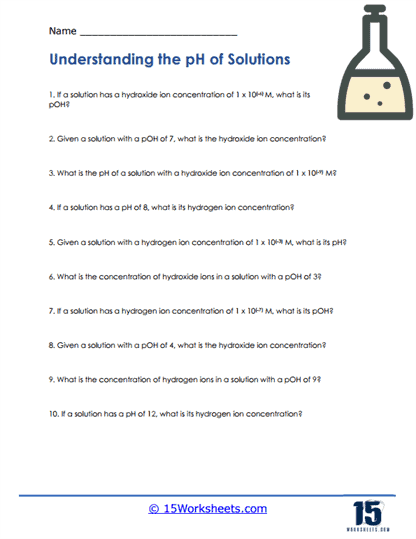Understanding the pH of Solutions

Worksheet Description
This worksheet delves into the comprehension and calculation of the pH and pOH of solutions, which are key measures to determine a solution’s acidity or alkalinity. Additionally, the worksheet requires the conversion between pH, pOH, and the concentrations of hydrogen ions ([H+]) and hydroxide ions ([OH-]).
This worksheet aims to:
Foster the understanding of pH, pOH, and their significance.
Develop skills in calculating pH, pOH, and ion concentrations for different solutions.
Concepts
pH – A logarithmic measure of the acidity of a solution, determined based on the concentration of hydrogen ions ([H+]) in the solution. The pH scale ranges from 0 to 14.
pOH – A logarithmic measure of the basicity of a solution, calculated based on the concentration of hydroxide ions ([OH-]). The pOH scale, just like the pH scale, ranges from 0 to 14.
Relationship between pH and pOH – In a given aqueous solution at 25°C, the sum of the pH and pOH always equals 14.
Ion Concentrations – The concentrations of [H+] and [OH-] in a solution are inversely related, and they dictate the solution’s pH and pOH, respectively.
